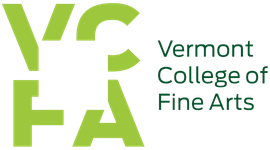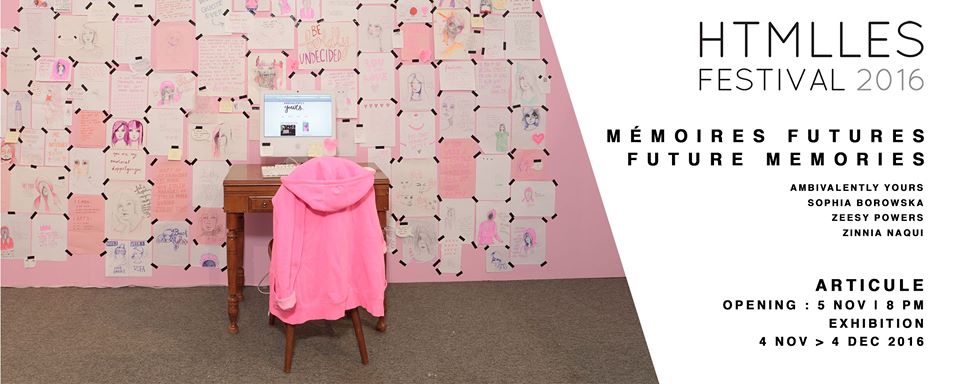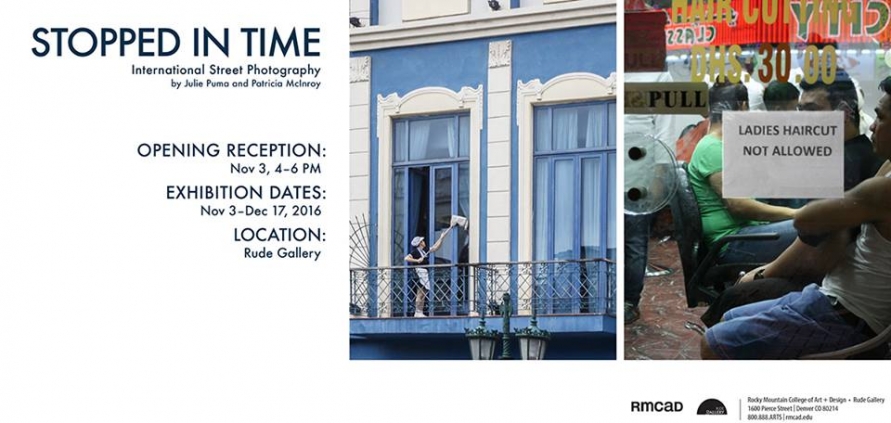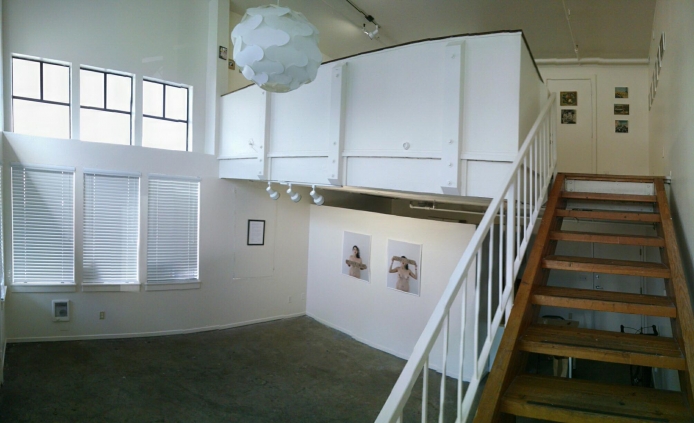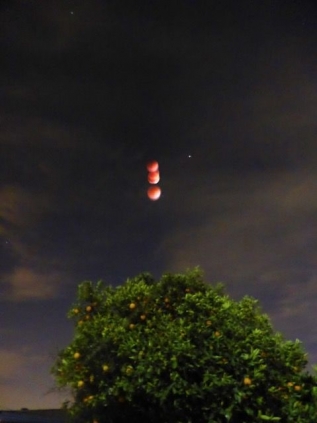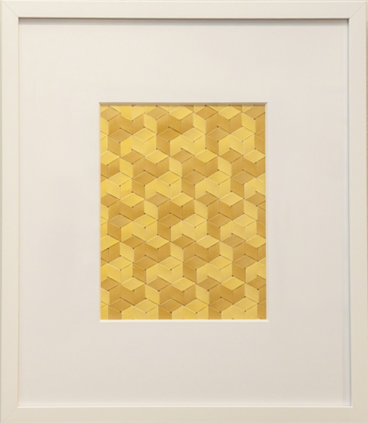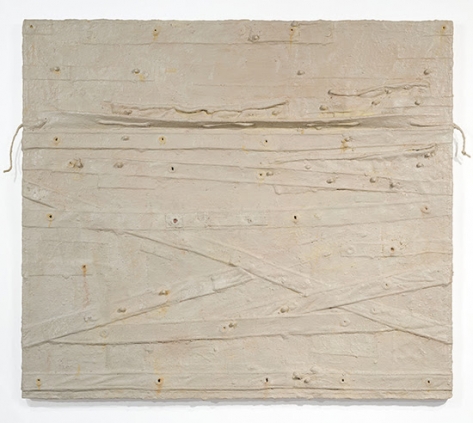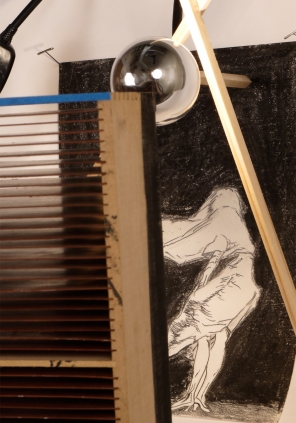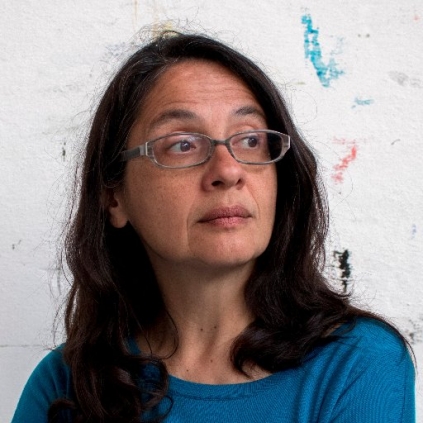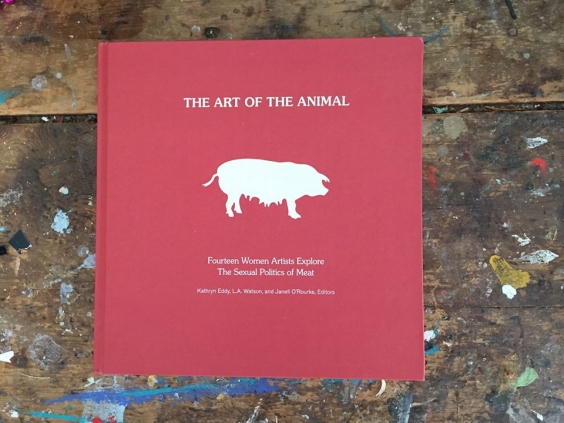By Addison Namnoum
For thousands of years, arguably dating into prehistory, humans have tried their hand at representing nature in art, the concept of “landscape” and what makes “landscape art” an ever-evolving genre. Our attitudes never settle long.
When considering the vast shift in the past two hundred years toward a largely industrializing world, our relationship with nature and its resources has understandably become even more complex. Rural areas are left behind, wild spaces depleted or irrevocably changed, old skills of necessity which once bound us to the natural world become increasingly forgotten. In the face of these significant changes, conservationists, urban-planners, and artists alike are tasked now to conceive new, fresh ways to both illustrate and engage with the natural world: What can it mean to us? How can we treasure and protect it? Can landscapes—and the art that reflects them—be reimagined yet again?

Mallary Johnson, “Re-Collect III.” Plant extracts on woven paper
34 3/4 × 27 1/2 in
For InLiquid Artist member Mallary Johnson, an artistic approach that is rooted in systems thinking and ecology opens up a world of exploration. “Systems thinking makes clear the deep interconnectedness of life. Engaging with ‘nature’ is important because we are not actually separate from it, although it often seems so in industrialized cultures,” reflects Johnson.
Systems thinking and its philosophical counterparts, creative vitalism (popularized by Henri Bergson in the early 1900s) and deep ecology (coined by Arne Næss in 1973), are still relatively new concepts. As Johnson explains, however, they provide useful lenses we can look through to arrive at a more imaginative understanding of our relationship with nature—and our active role within it. When approached through this new understanding, time stretches out on a different scale. Process richens in meaning. And, in defiance of the long-held belief that humans exist separate from nature, a peopled landscape emerges.
Johnson is one of the artists in the group show Reinterpreting Landscape and Nature at Stanek Gallery, curated by art advisor Barbara Harberger. The works in the show vary in materials and method, yet all probe this idea of connectivity while demonstrating a strong love of natural forms. Several of the artists, like Johnson, investigate the point where the urban-and-human meets the rural-and-natural, and where those seeming divisions break down. Contributing writer Addison Namnoum asked Johnson a few questions about her process and the thought behind her particular approach:
Addison Namnoum: You are both an educator and artist. How does ecology and systems thinking come into your work?
Mallary Johnson: In my work, I maintain a less anthropocentric point of view and embrace creative vitalism as a mode of working. Creative vitalism, as scholar and artist Joanna Zylinska defines it, refers to the “rethinking and remaking of life and what we can do with it.” Seeing life as a constant process of fracturing and becoming, creative vitalism acknowledges interconnectedness as a starting point and recognizes that we are constantly engaged in a complex process of co-creation with the rest of the more-than-human world. This strategy is where my projects take root. Whether I am teaching, organizing, or making visual art, I look for the relational connections involved and search for ways to elucidate, interrupt, or build on them accordingly.

Mallary Johnson, “Spinning Stars (Tumeric).”
Plant extracts on woven paper
18 3/4 × 16 1/2 in
AN: When you’re rethinking and remaking as a part of engaging with creative vitalism, I imagine you have to reevaluate certain concepts we take as givens: landscape, for example. When you break it apart, what is landscape to you, and how does it inform your work?
MJ: Landscape, to me, is a synthesis of elements, processes, place and time. Often understood visually, landscapes can include the physical properties of a given area (including landforms, living and inorganic elements, human structures, etc.) as well as the shifting geophysical and cultural processes acting upon them that alter their makeup over time. I draw inspiration equally from both the processes and effects.
AN: You are working within some interesting patterns in these pieces. They satisfy a kind of order. In some works, however, there are occasional interruptions to a pattern, like in Re-Collect I and Re-Collect III. These two pieces, with their jaggedness and breaks in color, come across almost as layers of sedimentation in rock. Do you take inspiration from the patterns you see in nature?
MJ: All the time—natural patterns play a huge role in my artwork. I’m also very interested in patterns found in textiles and surface design. The designs for my weavings and collages mix together the rhythms of shape, color and texture found in landscape elements such as vegetation or layered striations of rock with patterns drawn from weaving, quilting, and basket-making techniques.
AN: The patterning you work in is often subtle yet complex. In several pieces you are weaving tessellating forms—the effect is beautiful. Where do you begin these patterns? How do they evolve?
MJ: My compositions evolve from a conversation between color and pattern. Once I find a plant pigment that is working for me, I dye sheets of paper in a range of tones that compliment each other. When enough sheets have been prepared, I experiment with different weaving and quilting patterns, varying the dimensions until something coalesces. Many of the tessellating forms are constructed from a triaxial weave formation, which is a basket-weaving pattern created from three axes instead of the ninety-degree warp and weft pattern associated with most loom weaving. The series of work included in the Stanek show sets out to explore the relationship between biology and geometry. Creating tessellating shapes from weave patterns enables the two subjects to coexist visually. Often, the juxtaposition of natural materials with hard-edged shapes produces interspersed moments of visual tension and synchronicity. I like to think of it as a form of organic geometry.

Mallary Johnson, “Re-Collect I.”
Plant extracts on woven paper
34 3/4 × 27 1/2 in
AN: I love that. Definitely brings new meaning to organic geometry. As you mentioned, you made dyes for these pieces using your own plant-based extracts. What role does pigment-making play in your process, and why take the time to do it?
MJ: There are many reasons why I choose to create pigments from plants. The project where I began to work with plant-based dyes is entitled Rituals for Remembering. At the time, I was looking for a way to create earth-friendly non-toxic pigments to use in my work. Rather than interpreting the landscape through a visual representation, I thought it would be interesting to collude with the living landscape as part of the work. After experimenting with a variety of approaches, including grinding minerals to make paints and burning wood for charcoal, I settled on making dye extracts from plants. As a gardener, this process resonated with me on multiple levels. The ritual of cooking down the extracts allowed time to reflect on the source and cultural applications of the plants and translating weaving techniques into colorful paper collages tapped into the richly layered history of textile design.
AN: How does time enter into the representation of landscapes, for you?
MJ: Issues of time are central to my interpretation of landscape. Despite the intense pace required by everyday life in contemporary Western society, there are a variety of scales of time occurring in nature. My work reflects upon that. I am constantly searching for a way to pause, to expand time. Often I achieve this through my techniques. For example, when drawing or weaving, I employ very precise, repetitive processes that require intense focus. This strategy opens up a contemplative space surrounding the subject that I hope translates to the viewer. I am also very influenced by Slow Movement philosophy, which encourages taking the necessary time to consciously think about and experience the various activities in our everyday life. By doing so, more intentional decisions can be made regarding the material, social and environmental factors involved in daily decisions. I apply this philosophy to my choice of mediums and the way I structure my creative process.
AN: Final question for you, Mallary, though I wish I could ask more. How can art play a role in giving us a sense of rootedness?
MJ: This is a great question and a difficult one to answer succinctly. Art has a vast toolkit of ways to provide a sense of rootedness in many mediums. What I find especially interesting is the ability of art to provide space for shared experience where the creation of new ideas, identities, relationships, or communities can be established.
…
Looking at Mallary Johnson’s works, rich and subtle earth colors will pull you in, and patterns reminiscent of the inner growth of plants, the bend of grass in woven baskets, and layers of sediment gathered at the bottom of a lake will transfix you and take you deep into other times, while the works themselves remain contemporary, novel, and bright. Certainly the works of each artist in Reinterpreting Landscape and Nature will draw you back into nature in exciting and powerful new ways. You can visit the exhibition at Stanek Gallery, September 9 – October 29, 2016. Gallery hours: Thursday – Sunday, noon – 5 p.m. Learn more at www.stanekgallery.com.
